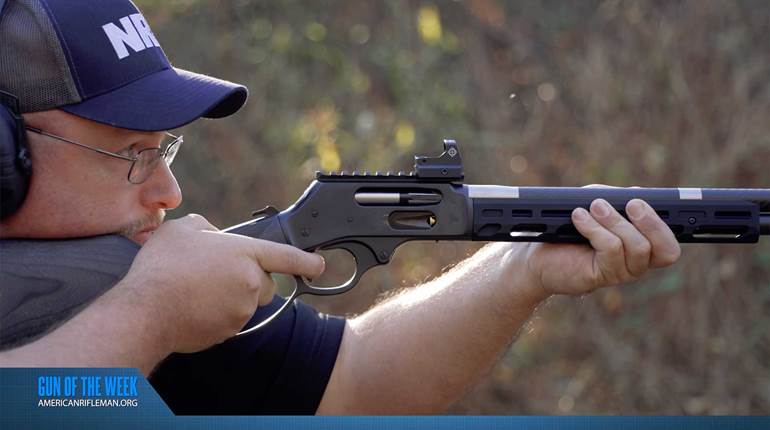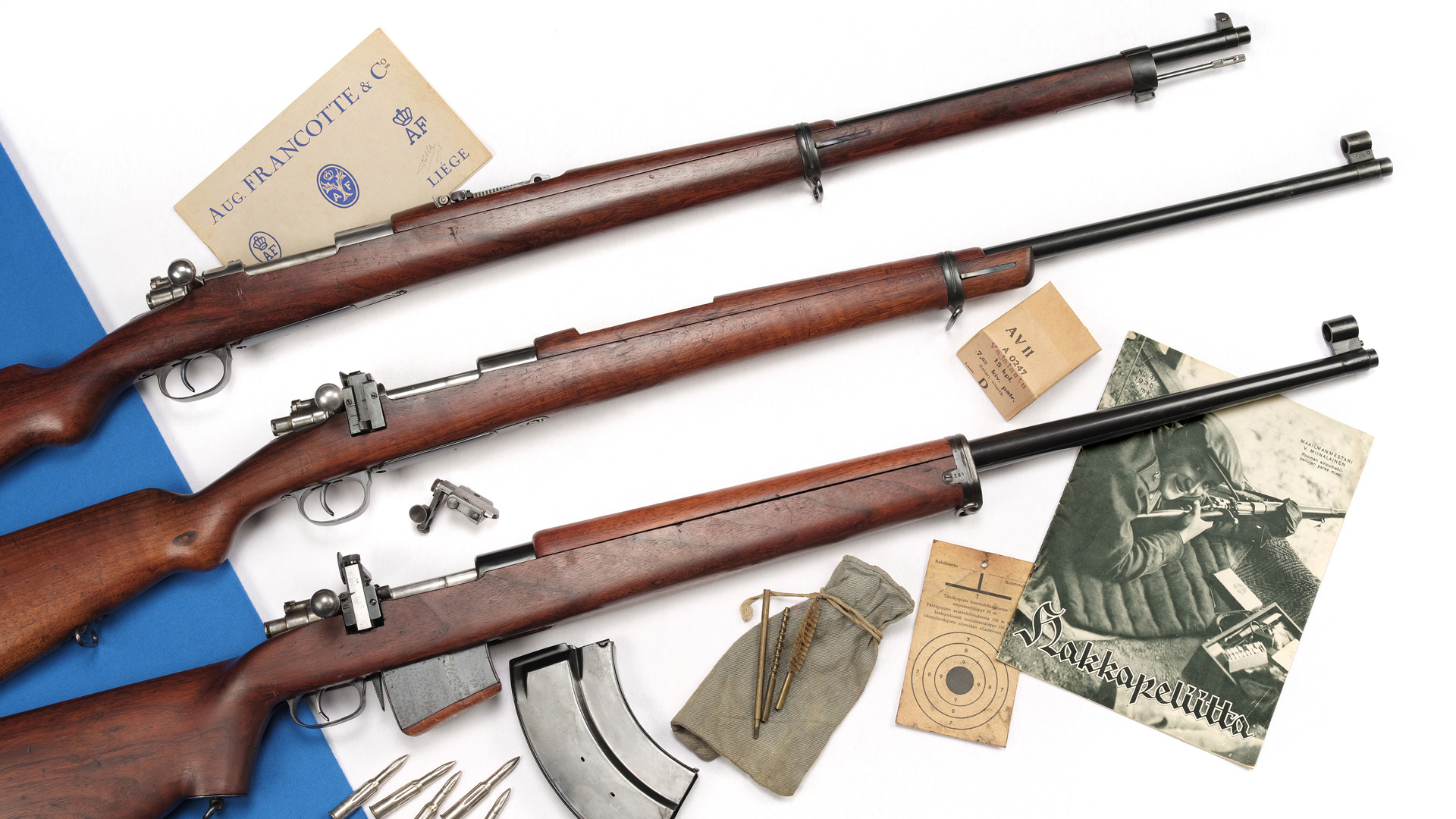
Like most people, gun writers can get a bit lazy at times. One common way is that we tend to repeat things we have heard until they grow to become “facts.” One such often repeated “fact” is that American shooters don’t like metric rifle cartridges, which might well be true if we could ignore the 7 mm Remington Magnum. But, how do you ignore one of the most successful big-game hunting cartridges in the history of the world? A survey I did of the ammo companies a few years back ranked it number six for big-game cartridge sales. Considering the huge number of rifle cartridges available, that’s a pretty wholehearted acceptance of a metric rifle cartridge. So, I guess the correct statement would be that we don’t like most metric cartridges, but the ones we do like, we like in a big way.
The reason, I suspect, is simple. We recognize and respect performance and value. When it was introduced in 1962, the 7 mm Rem. Mag. brought a new level of affordable performance to the table. The .300 Win. Mag. was still a year away, and this new Remington cartridge brought belted magnum performance to the mainstream. Rather than the long, tapered case of the Holland & Holland cartridges, the 7 mm Rem. Mag. used what was to be the design base for a lot of cartridges to follow; that is, minimal body taper and a sharp shoulder. Some will argue, quite correctly, that Weatherby had been doing it for years, but the Weatherby cartridges were only available in the pricey Weatherby rifles back then. The .264 Win. and .338 Win. Mag. also had a head start, but were not setting the sales world on fire. The .338 was too big for most shooters and the .264 Win. just didn’t live up to its promise of performance.

The Remington cartridge had the marketing power of “Big Green” behind it, caught the public’s attention and, for whatever reason, took off. It might have been that several popular writers at the time were filling the gun magazines with fantastic stories of exploits about using 7 mm wildcat cartridges with similar performance, and the hunting public was primed and ready for this cartridge. But most likely, the 7 mm Rem. Mag. owes its popularity to the fact that it was introduced with the new Model 700 rifle—one of the most popular sporting rifles in history. Like the .30-30 Win. and the Model 94 Winchester, the unanswered question is, would the cartridge have been as big of a success without the rifle?
My first trip to hunt big game other than New England whitetails was in 1984, and after that George River caribou hunt, I knew I was hooked for life. I also knew that I needed a new rifle. (Any excuse, right?) The choice of a rifle that would prepare me for any big-game hunting opportunity ahead was obvious to me. Back then, the Remington 700 Classic was still a catalog item and there was never any doubt about the chambering—I ordered it in 7 mm Rem. Mag.
In those days, I think I tried about every suitable bullet and powder on the market. I settled on a 160-gr. Nosler Partition pushed by 63 grs. of IMR 4831 and never looked back. I took the gun to Montana that fall where, being too naive to know the difference, I tried to shoot a running mule deer at about 400 yds. Today I would never try that shot, but on the other hand, I hit him with all three shots and his head is hanging beside me as I write this.
Throughout the next 21 years I also used the 7 mm Rem. Mag. to take everything from antelope to black bear. I have seen this cartridge work all over the world and on all kinds of game under all kinds of conditions. It ranks near the top as one of the most versatile big-game hunting cartridges ever created. Many hunters believe the 7 mm bullet gives the best balance of sectional density and velocity while keeping recoil manageable. Bigger bores require heavier bullets to match the sectional density, so with equal velocity, the recoil starts to become unmanageable for many. Anything smaller in diameter doesn’t carry enough weight and energy for penetration and killing power when it comes to big game.

There is a lot of variation in load data for the 7 mm Rem. Mag., particularly with some of the older loading manuals. Be careful about the data you are using, and try to select it from an up-to-date source. Also, unless your rifle is new, it might be good to make a chamber cast. Many of the older manuals reference a wide variation in chamber dimensions with some early rifles, particularly some imported rifles. The early manuals also mention chamber throat erosion quite a bit. It was a problem for a while, and I seem to recall that Remington made some stainless steel barrels that were coated to look like they were blued to address the issue. If your gun is old and its shooting history unknown, it might be a good idea to check the throat. I haven’t heard much about throat erosion from this cartridge recently, which would indicate that modern materials have solved the problem of premature throat erosion. Still, this is a high-intensity cartridge, and it will be hard on a barrel. If you shoot a lot, sooner or later you will need to make some adjustments for throat erosion.
One thing that puzzles me a bit is why the 7 mm Rem. Magnum has a maximum average pressure limit of 61,000 p.s.i. while the .300 Win. Mag., introduced just a year later, has a Mean Average Pressure (m.a.p.) of 64,000 p.s.i. This would seem to limit the performance of the cartridge without good reason.
The 7 mm Rem. Mag. is a big-game cartridge, and attempts to change that will probably be met with disappointment. In that light, bullets start at 139 to 140 grs. and top out at 175 grs. Other than possibly the .30 caliber, no other bullet diameter can claim as many bullet options as the 7 mm, and finding a bullet you like in the weight you want should not be a problem.
It might be argued that the various 120-gr. bullets will make this into a varmint gun. But, I have had trouble making them shoot well in most 7 mm Rem. Mags. The reason, I suspect, is due to the short bullets and the long jump necessary to hit the rifling. No matter, few want to use this gun on a prairie dog town for very long anyway, and there are far better choices for hunting coyotes and other predators.
Like most “magnum” cartridges, the 7 mm Rem. Mag. prefers magnum primers and slow-burning powders. I have had good luck with IMR 7828, H4831, Magnum, RL 22 and RL 25, but that’s far from a complete list, just what’s worked for me.
I still have that Remington Model 700 classic. But over the years I have owned six other 7 mm Rem. Mags. Is seven rifles in 22 years evidence enough of my acceptance of a metric cartridge? If not, perhaps I’ll buy another. Any excuse, right?
This feature, "Loading Remington’s First Belted Magnum: The 7 mm Rem. Mag." article appeared originally in the May 2005 issue of American Rifleman. To subscribe to the magazine, visit the NRA membership page and select American Rifleman as your member magazine.





































